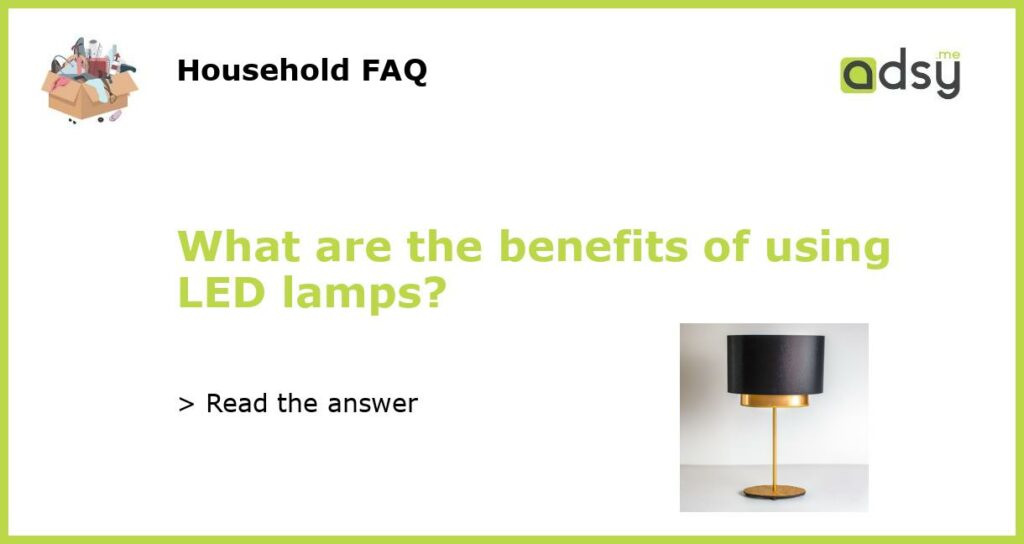Understanding LED Lamps
Light Emitting Diode (LED) lamps are an energy-efficient lighting solution that has gained popularity in recent years due to their numerous benefits over traditional lighting options. LED lamps use less energy than their incandescent and fluorescent counterparts, last longer, and are more environmentally-friendly. In this article, we will explore the benefits of using LED lamps in your home or office.
Energy Efficiency
One of the most significant benefits of LED lamps is their energy efficiency. LED lamps use up to 80% less energy than traditional incandescent bulbs, resulting in significant savings on your electricity bills. This efficiency is achieved by the use of semiconductors that convert electricity into light energy, with minimal energy loss as heat. Choosing LED lamps for your lighting needs is not only cost-effective but also contributes to environmental conservation efforts.
Durability and Longevity
LED lamps are highly durable and long-lasting. Unlike incandescent bulbs, LED lamps do not burn out abruptly, but instead, their brightness gradually fades over time, providing a clear indication that they need replacement. The average lifespan of an LED lamp is 25,000 hours, which translates to several years of usage. This longevity is especially useful in commercial settings, where the cost of frequent bulb replacement can be high.
Safety
Unlike traditional bulbs, LED lamps do not emit UV rays, making them safer for use in homes and offices. UV light exposure can cause skin damage, accelerated aging, and even skin cancer. Also, LED lamps do not emit heat as traditional bulbs, which can reduce the risk of fire in the event of accidental contact with combustible materials. Therefore, LED lamps are a safer lighting alternative for both indoor and outdoor use.
Improved Quality of Light
LED lamps produce a brighter, clearer, and more consistent light that mimics natural daylight, making them ideal for use in reading lamps, work desks, and other areas that require clear visibility. Additionally, LED lamps come in a range of color temperatures to suit different settings and moods. Their color rendering index (CRI) is also higher than traditional bulbs, indicating that they can produce a wider range of colors accurately and vibrantly.
Environmental Friendliness
LED lamps are environmentally friendly, as they use less energy, produce less heat, and contain no harmful chemicals such as mercury. They are fully recyclable and contribute to reducing carbon emissions. Their long lifespan also means that fewer lamps are disposed of, reducing the amount of waste generated. By choosing LED lamps, you can help reduce your carbon footprint and contribute to environmental conservation.
LED lamps are an excellent lighting solution for their energy efficiency, durability, safety, improved quality of light, and environmental friendliness. Although they may be more expensive upfront, their long life and energy savings quickly make up for the initial cost. With their numerous benefits, LED lamps are worth considering for your home or office’s lighting needs.






